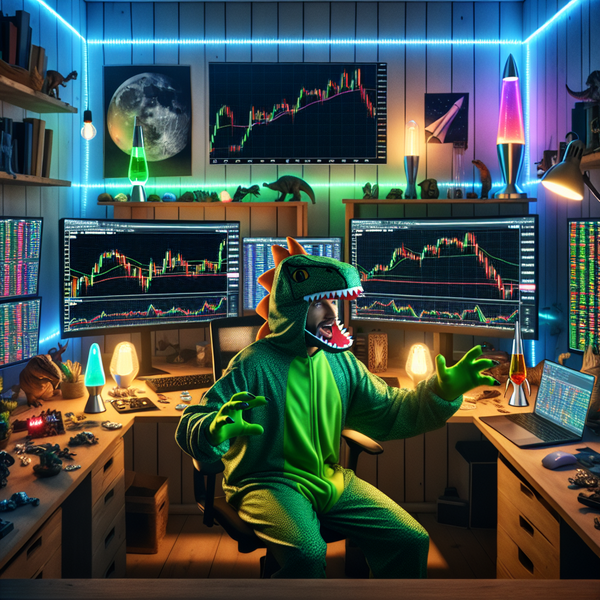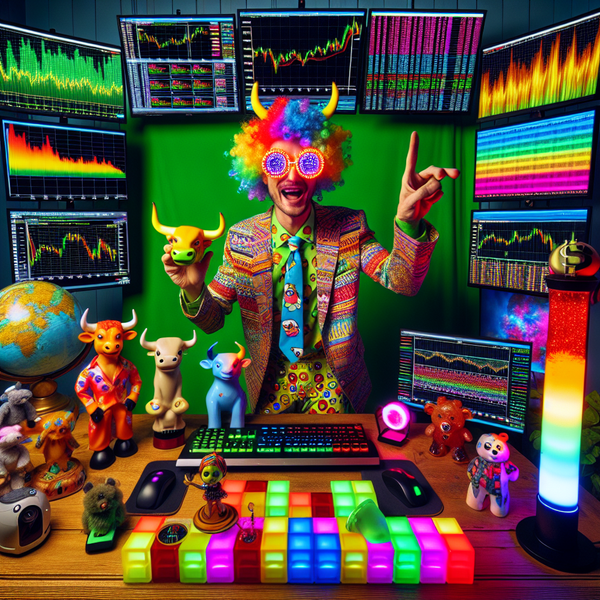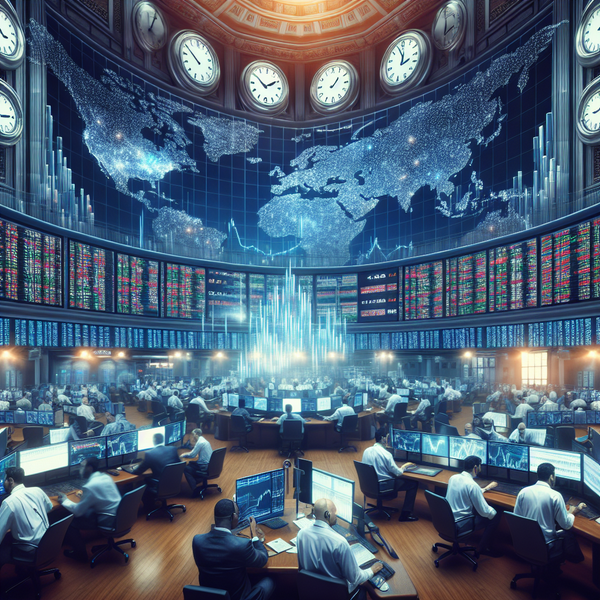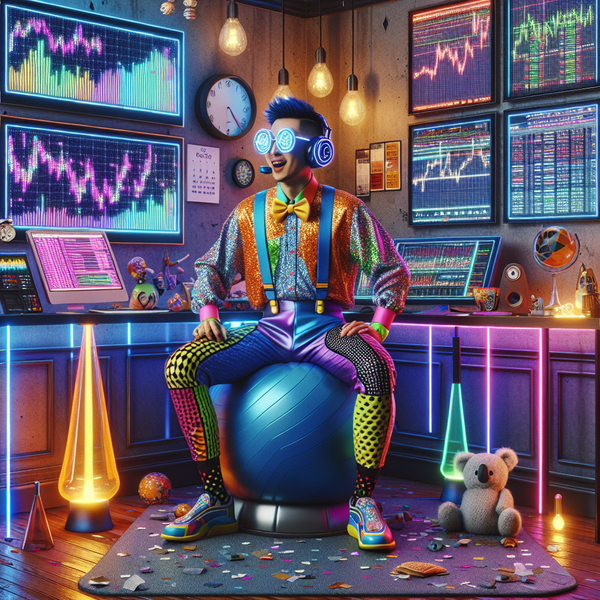How to Trade the Dow Index Futures
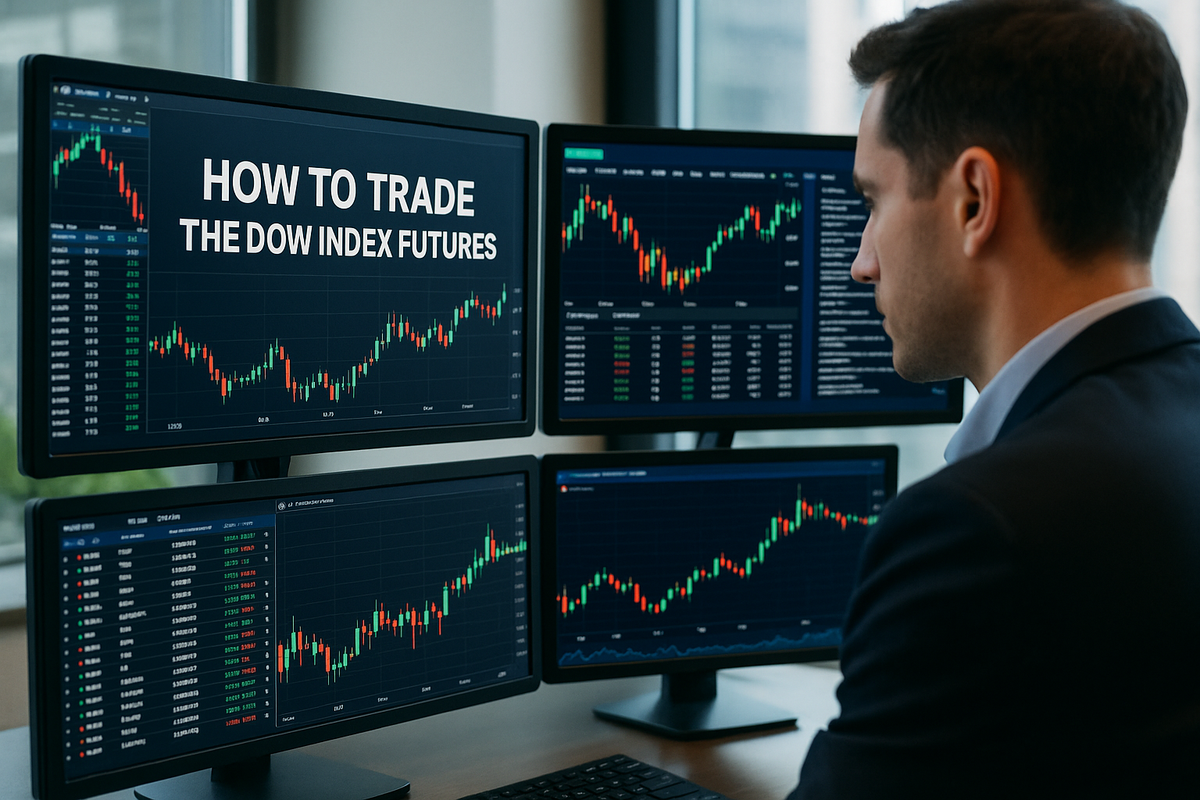
Trading Dow index futures is a powerful way for both beginners and experienced investors to gain exposure to one of the world’s oldest and most respected market benchmarks. If you’re curious about how to trade the Dow index, it’s crucial to understand its mechanics, trading hours, and strategies for managing risk. The Dow Jones Industrial Average (DJIA) isn’t just a marker of market sentiment, it has become a key tool for those seeking to trade short-term movements and manage portfolios in a fast-paced financial world.
Learning how to trade Dow futures opens the door to unique opportunities. The contracts allow you to speculate on the direction of this prestigious index, no matter where the broader stock market might be heading. These futures are traded nearly around the clock, offering access to global news and price swings outside regular stock market hours. But before you make that first trade, you’ll want to know the required opening time of Dow Jones contracts, understand what are Dow Jones futures, and discover which strategies fit your trading goals.
The Basics of Dow Futures
What Are Dow Jones Futures?
Dow Jones futures are standardized contracts that allow traders to speculate on the future value of the Dow Jones Industrial Average (DJIA). These contracts provide a way to take a position on the overall trend of the US stock market without directly buying each individual Dow component stock. When people refer to what are Dow Jones futures, they’re talking about agreements to buy or sell the DJIA at a set price on a future date. The main exchanges offering these products are CME Group’s Globex platform, one of the world’s leading electronic markets.
What Is Dow Jones Futures Index?
So, what is Dow Jones futures index? The Dow Jones futures index simply refers to the value of the futures contract that tracks the DJIA. This number follows the expected price of the Dow at a specific point in the future, often the next quarterly expiration. The price of the Dow Jones futures index will track the cash index closely, but sometimes a slight premium or discount appears due to interest rates, dividends, or other market factors.
Because this contract is based on the DJIA’s current value, understanding how those 30 heavyweight stocks interact is vital. This is why many traders look at both the spot Dow and its futures counterpart to spot trading opportunities or arbitrage mispricings. If you want to learn more about how indices influence trading decisions, Investopedia offers a strong overview of the basics behind index investing and trading.
How the Dow Is Calculated
The Dow Jones Industrial Average is a price-weighted index, meaning each company’s influence is based on its share price, not market capitalization. Understanding how is the Dow calculated is pivotal. The sum of the component companies’ prices is divided by the Dow divisor, a figure adjusted over time to account for events like stock splits, mergers, or spinoffs.
This approach makes higher-priced stocks more influential over the Dow’s daily moves. For example, a $10 change in a $300 stock included in the Dow sways the index more than a $10 change in a $50 company. This can create opportunities for traders who closely monitor both individual DJIA components and overall index moves.
Key Trading Hours to Know
When Does Dow Futures Open?
Understanding when does Dow futures open is crucial for active traders who want to take advantage of volatile swings, especially surrounding economic reports or global news. Dow Jones futures contracts, traded under the symbol YM on the CME Globex electronic platform, are available nearly 24 hours a day, five days a week. Trading typically starts at 6:00 p.m. Eastern Time (ET) on Sunday and runs through to 5:00 p.m. ET Friday, with a daily halt from 5:00 p.m. to 6:00 p.m. ET for maintenance.
What Time Does the Dow Jones Industrial Average Close?
Another key question is what time does the Dow Jones Industrial Average close. The DJIA, like all other major US stock indices, stops trading for underlying stocks at 4:00 p.m. ET every regular business day. That’s when the New York Stock Exchange (NYSE) closes, and official closing prices are calculated and published.
However, as you now know, Dow index futures trading continues beyond these hours. This ability to “trade after the close” offers exciting opportunities and risk-management strategies, especially for traders who can’t watch the market during the regular session. After 4:00 p.m., volume tends to drop in Dow futures, but sharp moves can still occur as news develops or futures traders adjust positions before the next day’s opening bell.
Symbols and Contracts Explained
Dow Futures Symbol vs. Dow Futures Contract Symbol
Navigating the technical language can get confusing, especially when distinguishing between the Dow futures symbol and the Dow futures contract symbol. The general Dow futures symbol is YM, which stands for the standardized futures contract tracking the Dow Jones Industrial Average on the CME Globex electronic exchange. Traders usually see this symbol in trading software, broker statements, and news platforms.
E-Mini Dow Futures and Micros
E-mini Dow futures are a smaller, more accessible version of traditional Dow contracts. The E-mini contract (YM) represents $5 multiplied by the value of the DJIA. As an example, if the Dow index is at 35,000, the notional value of one E-mini Dow contract is $175,000. The smaller sizing means the margin required to open a position is much lower than with older “full-size” contracts, putting these products within reach of everyday traders.
Micros, meanwhile, are an even tinier fraction of the E-mini, enabling extremely precise risk control and quick scaling in or out of positions. While E-minis have the most liquidity and tightest bid-ask spreads, Micro contracts are helpful for new traders or for fine-tuning a portfolio’s exposure.
YM Meaning in Futures
If you come across the question “YM meaning in futures,” the answer is straightforward: YM is simply the standardized ticker code for the E-mini Dow Jones Industrial Average futures contract. This code allows traders, brokers, and data providers to track and execute trades on the Dow index efficiently.
When you see “YM” with a date or month code attached, you’re looking at a specific contract for the E-mini Dow. Think of it as the trading world’s shortcut, when you’re placing orders or searching for charts, using the correct code ensures you’re targeting the market you intend.
These contract symbols are standard across nearly every trading platform, adding consistency and clarity for Dow index traders worldwide. If you want to see how these codes are implemented in live markets, consider reviewing a platform demo. Some brokers let you try out charting and order entry using practice accounts tied directly to YM-labeled Dow futures.

How to Trade the Dow Index
Step 1: Choose Your Broker and Platform
The very first step in how to trade the Dow index involves selecting the right broker and trading platform. Look for a broker with access to CME contracts, the only exchange where E-mini and Micro Dow futures are available. Consider aspects like execution speed, margin requirements, liquidity, and platform reliability. It’s also wise to confirm that the broker offers demo trading so you can practice before risking real money.
Some brokers provide advanced charting tools, automated trading systems, or deep fundamental data to help you analyze the market. Your platform should let you view the Dow futures symbol (YM and the relevant contract code), manage trade sizes, and set stop-loss or take-profit orders. Curious what platforms other experienced traders use? Visit Funded Futures Network’s recommended platforms to compare features and find one that fits your needs.
Step 2: Pick Your Contract Size
Once you’re set up, you need to choose between E-mini Dow futures, Micro Dow futures, or both. The E-mini contract (YM) is a common entry point for active traders due to its liquidity. Micros offer smaller exposure, making them perfect for cautious traders or those just starting out.
According to the FFN's account sizing options, matching contract size with your risk profile is crucial. Always remember, the larger your contract, the bigger your potential gains or losses. Beginners typically start with Micros to limit downside risk, while seasoned traders might handle multiple E-mini contracts simultaneously.
Step 3: Define Your Risk
Determining your stop-loss and risk level is next. Before entering any trade, calculate how much you are willing to lose if the market doesn’t go your way. Most professionals risk only a small percentage of their trading capital per position, often between 0.5% to 2%. Map out your entry and exit points based on technical analysis, as well as target profit zones and areas where you’d cut losses.
Step 4: Place Your Trade
Now you’re ready to trade the Dow index. Enter your order using your chosen broker’s trading platform. Options include market orders (filled immediately at the best available price), limit orders (filled only at your specified price), and stop orders (which become active only when certain price levels are hit).
Investing vs. Trading the Dow
How to Invest in Dow Jones
When exploring how to invest in Dow Jones, most investors think of traditional routes such as index funds or exchange-traded funds (ETFs) that mirror the DJIA’s performance. For example, buying shares of the SPDR Dow Jones Industrial Average ETF (DIA) provides direct exposure to the index without managing individual stocks. This hands-off approach is ideal for long-term investors seeking steady, diversified returns over years or decades.
Why Trade Futures Instead of Investing?
Some traders choose futures over traditional investing for their unique features. Futures require only a small margin deposit, allowing for magnified returns or losses, with less upfront capital. Active traders use Dow futures for quick, high-leverage opportunities when they expect significant price moves over hours or days.
Futures are also essential for hedging. If you own a portfolio weighted heavily in Dow stocks and worry about a sharp downturn, selling Dow futures lets you offset much of that risk. For a deeper look at the psychology behind these choices, check out TraderMind’s guide to building a trader’s mindset.
Trading Strategies for Dow Futures
Day Trading the Open
Day trading Dow futures at the morning open is one of the most popular strategies for experienced traders. The first hour of the trading day, right after the opening time of Dow Jones futures carries immense volume and volatility. Economic data releases, overnight global market moves, and fresh news headlines all converge to create rapid price swings.
Swing Trading Overnight Sessions
Swing trading the overnight session in Dow futures involves holding a trade outside regular US stock market hours. Since the CME Globex allows nearly 24-hour trading, you can enter trades based on international news or technical chart signals as global markets react to events in Asia and Europe.
A swing trader might spot a bullish pattern developing on Dow index charts at 8:00 p.m. ET due to a major earnings report in Asia. By holding the trade for several hours, they aim to catch further movement once US markets reopen. This style suits those who can’t actively trade the NYSE open but still want to profit from “off-hours” volatility. Proper risk controls, such as wider stops and limited position sizing, are vital due to the lower liquidity and higher spreads at night.
Hedging With Dow Futures
Hedging is a powerful reason to trade Dow futures, especially for investors or fund managers with sizable portfolios in Dow component stocks. Let’s say you are long several blue-chip stocks but anticipate a short-term market correction. Selling Dow futures offers a way to guard against broad losses without selling your underlying shares.
Risks and Risk Management
Leverage and Volatility
Dow futures offer significant leverage, which means you control a large notional amount with a small initial margin. While this boosts profit potential, it also increases risk magnitude. Even minor Dow index moves can generate big wins, or steep losses. Volatility spikes during economic releases, unexpected news, or market corrections demand strict attention to order sizing and stop placement.
News-Driven Risk
The Dow index reacts sharply to breaking news, such as Federal Reserve decisions, major corporate earnings, or geopolitical events. Overnight market-moving headlines, such as international politics or global pandemics, can trigger sudden gaps or reversals in futures prices..
Protecting Your Account
Disciplined risk management is essential for long-term trading success. Always set stop-loss orders and never risk more than a small portion of your account on any single position. Regularly review trading rules, such as those detailed in funded futures account agreements, to avoid costly margin calls or forced liquidations.
Many skilled futures traders recommend keeping a daily log of trades, journaling both the reasoning behind setups and emotional reactions. This practice uncovers patterns in your trading psychology and makes it easier to evolve your approach as you gain experience.
Access to clear trading rules and robust risk tools is a hallmark of top brokers. To find out what separates great account management practices from average ones, you can check the guidance on the FFN's official website for more insights.
Conclusion: Trade Dow Futures With Confidence
Stepping confidently into Dow index futures trading starts with a solid understanding of contract mechanics, key trading hours, and robust risk management strategies. When you're using symbols like YM, discern contract sizes, and respond to global news, you're already ahead of the average market participant.
The Dow Jones futures marketplace is unique in allowing nearly 24/5 access, letting you turn economic knowledge and technical setups into actionable trades. Whether you are day trading the open, swing trading during international sessions, or using futures to hedge your portfolio, following disciplined risk practices is essential for lasting success. Always align your risk controls with your account size and the specific products you trade to avoid small missteps becoming large setbacks.
